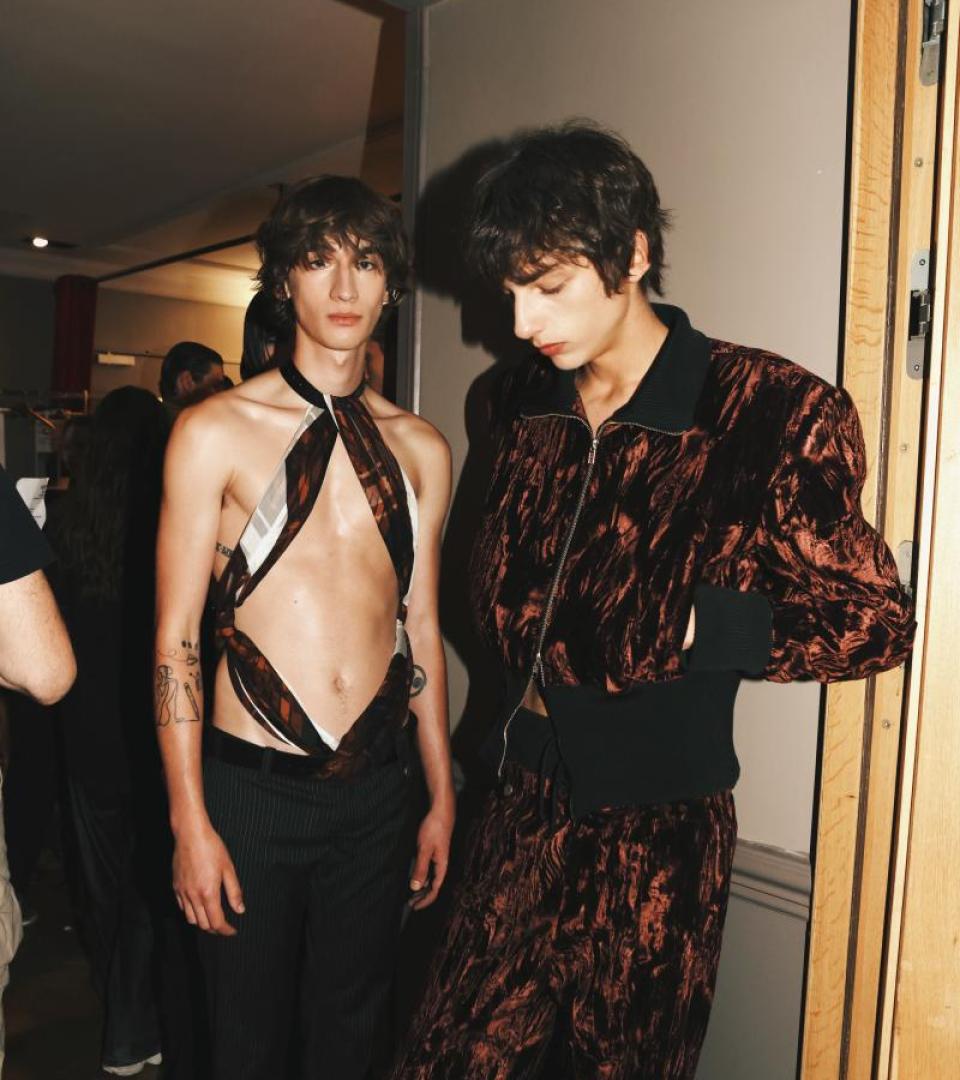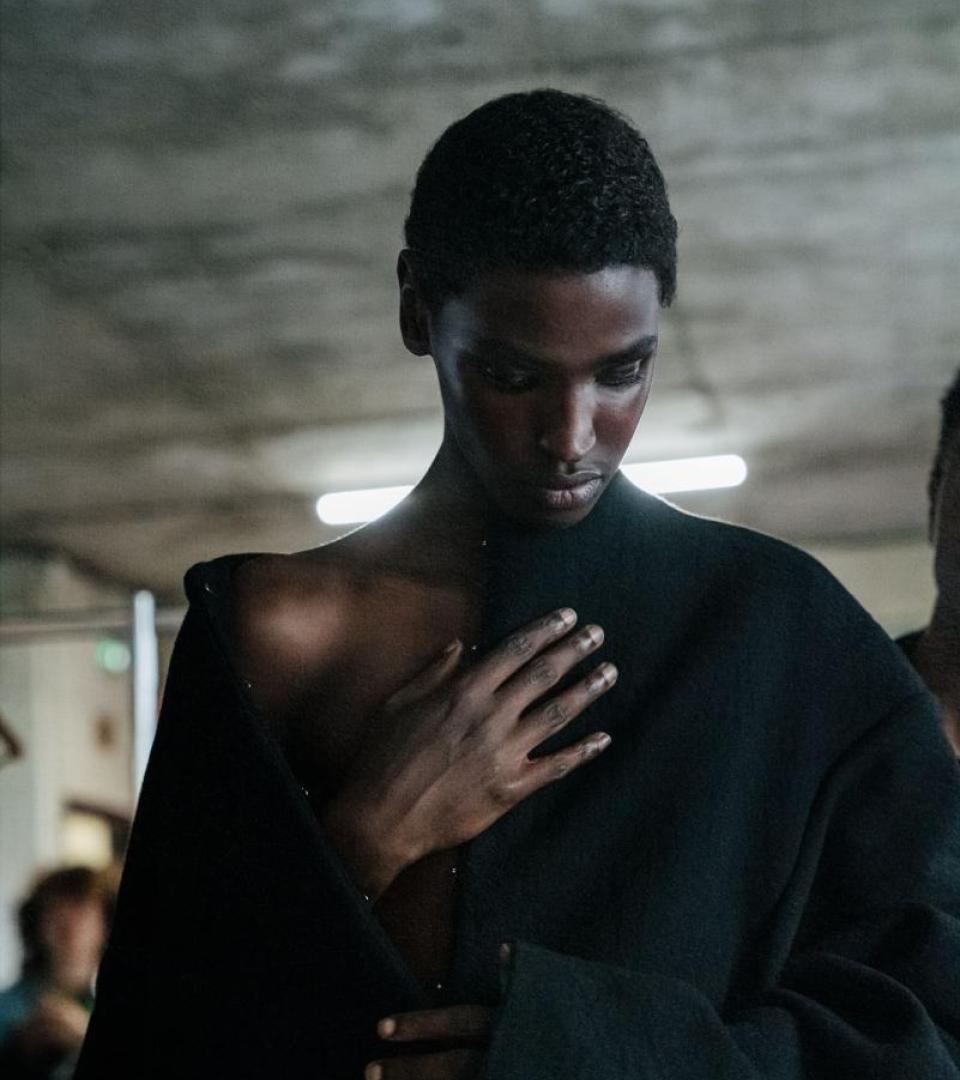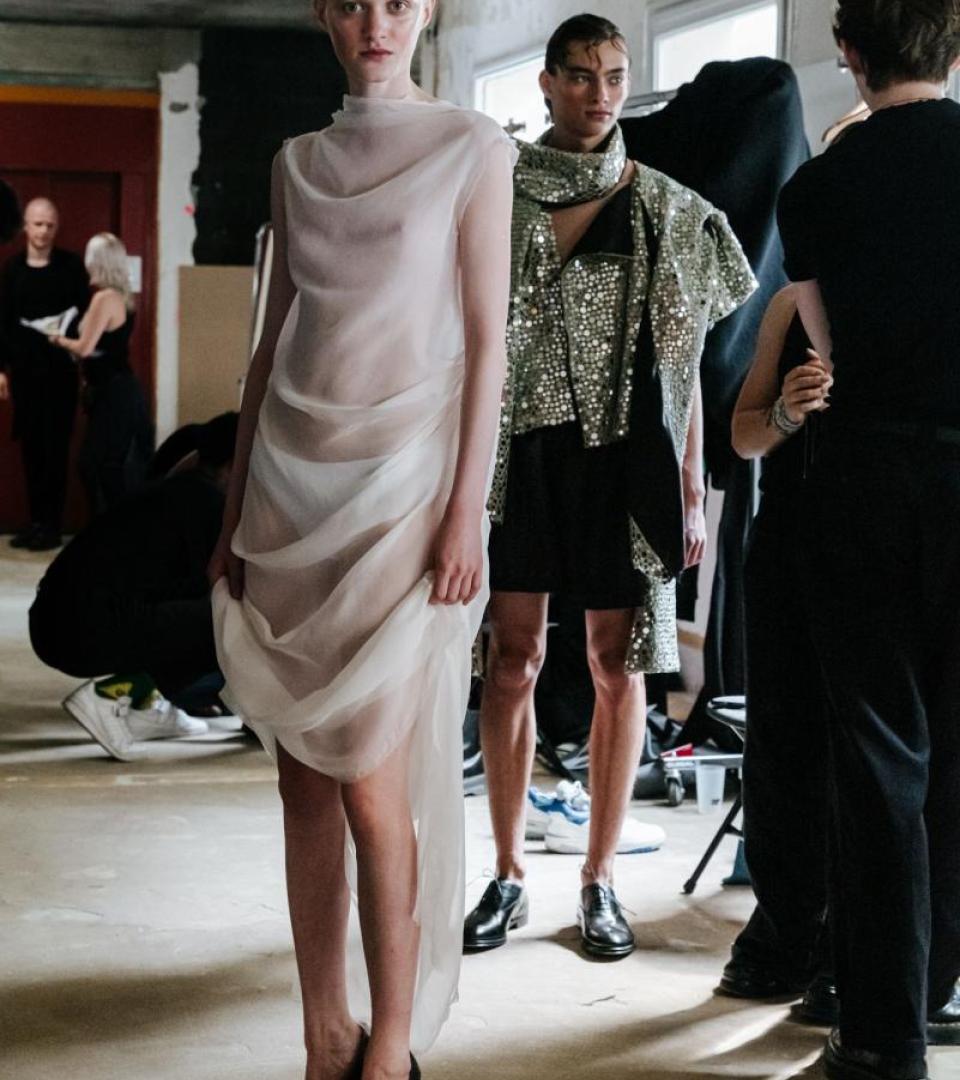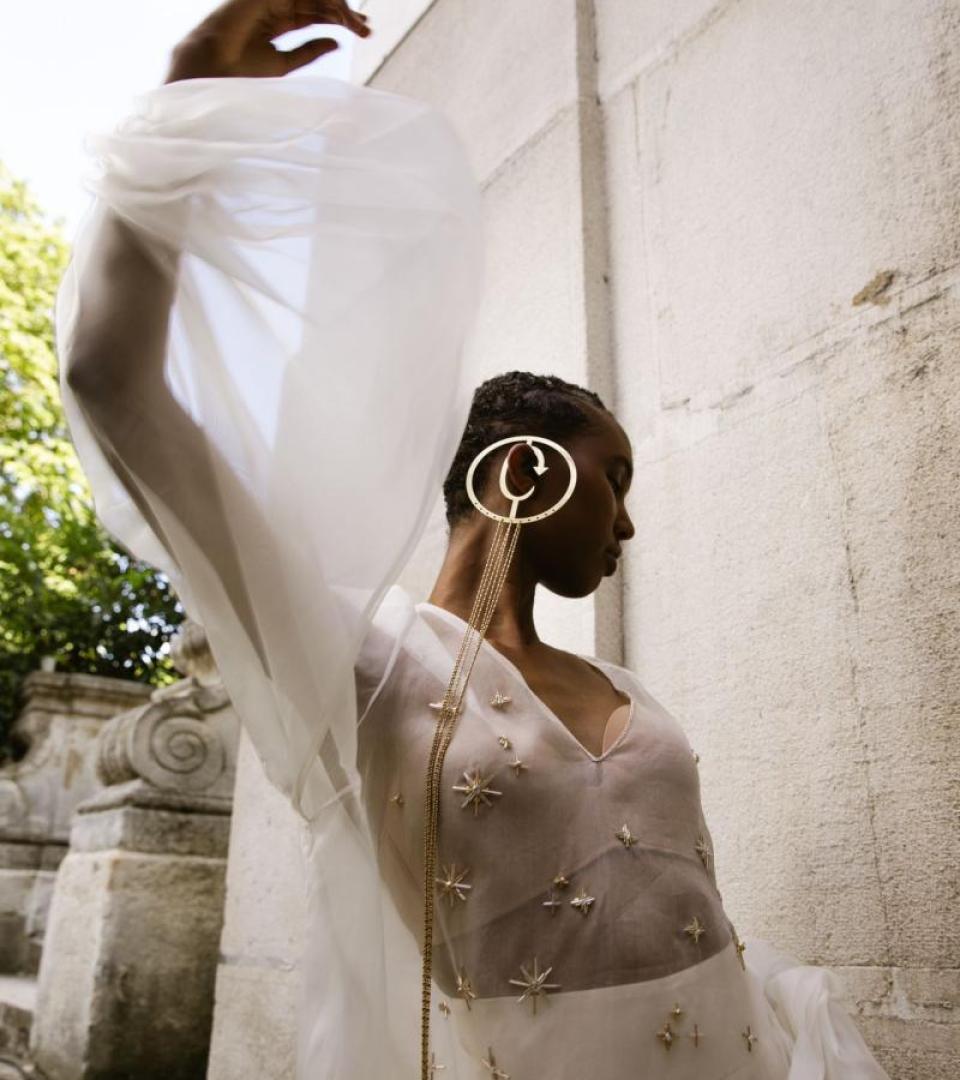Les 1001 Desseins de L’ABCD’Orsay
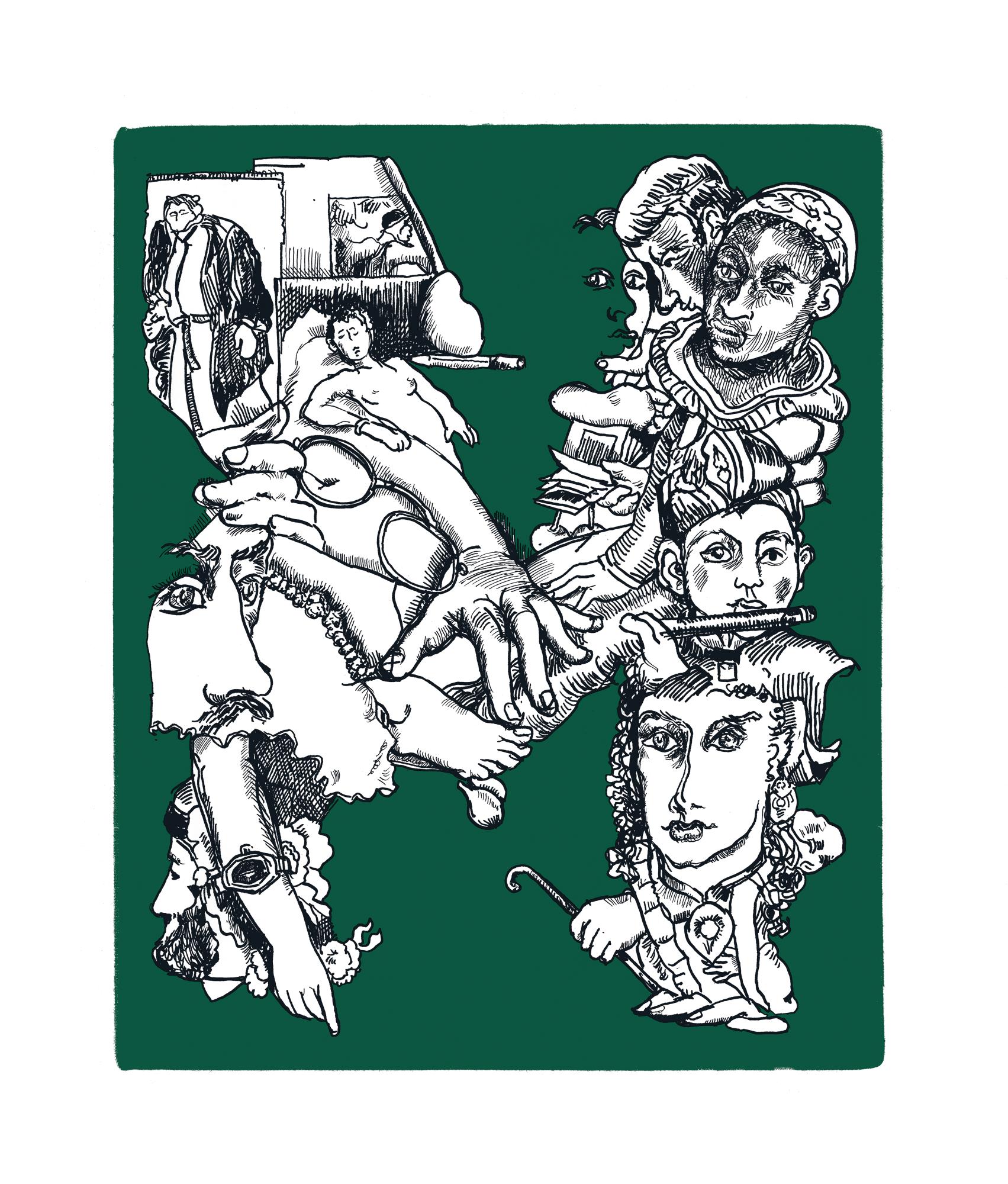
Today, Louis Vuitton returns to the Musée d’Orsay, where the Women’s Fall-Winter ’22 show took place. While the museum is closed to visitors as it is every Monday and guests will not be able to wander around, an ambitious series of drawings by Mathias Augustyniak, who is the co-director of M/M Paris with Michaël Amzalag, is worth seeing before the exhibition closes on March 12th. Located along a bridgeway on the 4th level, it plays out as an exceptional alphabet – each letter corresponding to an artist within the museum. Augustyniak, whose artistic singularity comes through in developing visual identity elements for the likes of Loewe, Charlotte Chesnais, Byredo and Bjork, spent a year wandering through the galleries: absorbing, remixing and engaging with the works as an exercise bound by constraints but open to interpretation. M manifests Manet, R reconceives Renoir, D deconstructs Degas… and so forth, with each drawing immersed in a solid colour backdrop extracted from the artist’s palette. Augustyniak, whose parallel exhibition with Amzalag, En Toutes Lettres, just ended at the Air de Paris gallery in Romainville, says his work “always tends to blur things that are very personal within a commercial context or real life.”
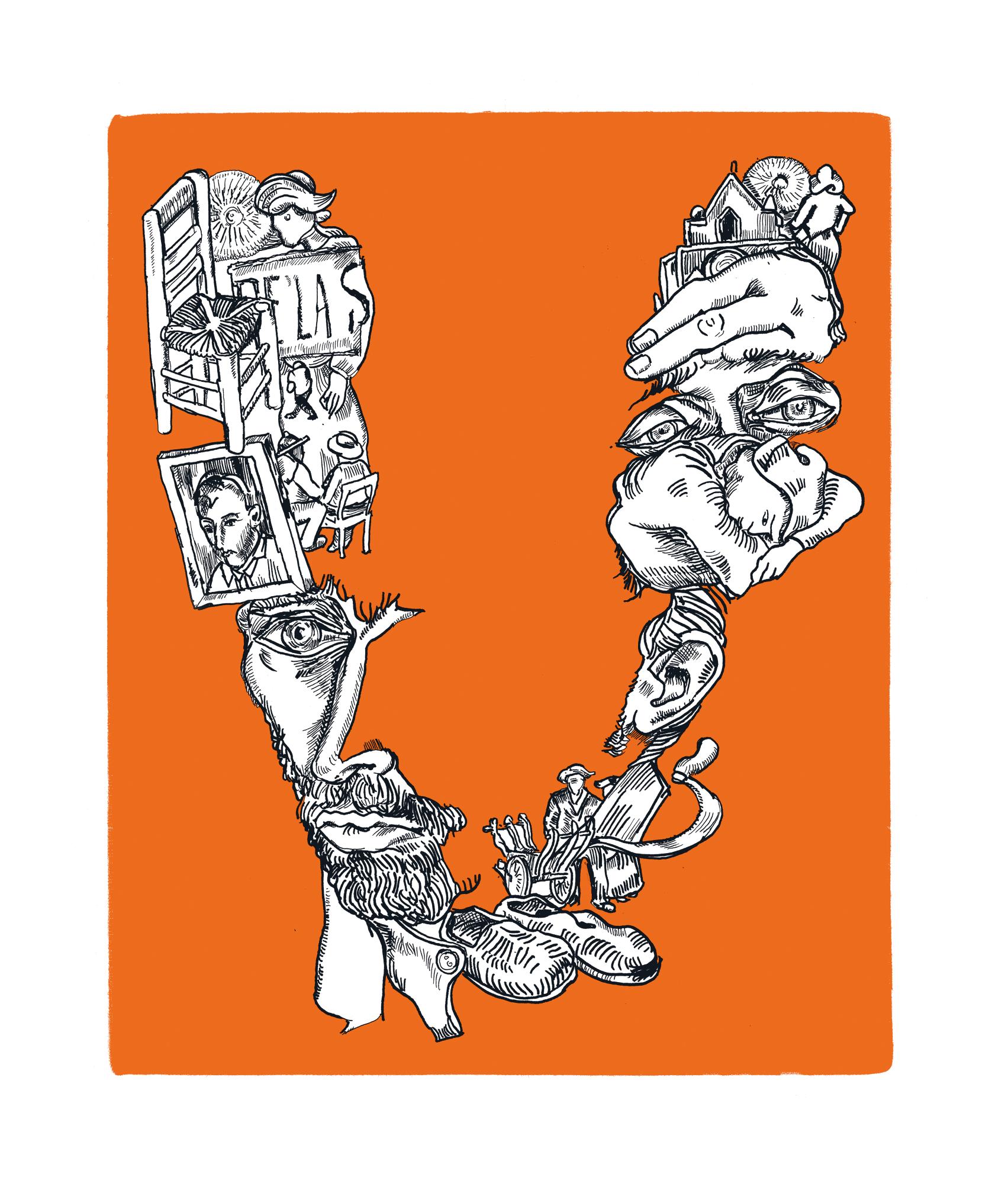
What motivated this artistic alphabet?
I had in mind to do this for a long time. And I knew it would take a long time. At first, this exhibition was supposed to be follow-up to a much bigger exhibition at Musée des Arts Décoratifs. I felt I didn’t really pursue the obsession I had in mind – to engage in a true dialogue with the museum. It was extremely personal as, since I was a kid, museums have been very important places for me. And now within my art practice, it is very important to connect to history of art. In my practice, I don’t see this as referential, but connecting to what’s done before; so that it in the end, it makes sense. An exhibition like this is very personal but also belongs to the viewer and the artist who came before.
Initially, no pun intended, it seems like a straightforward premise. But the realisation for you must have proven highly challenging.
I wanted to wander through the museum over a period of time, over one year. I really wanted to see as much as possible. Before going, I set up a procedure, so when I would get lost within this crazy ambitious process, I could go back to procedure. I bought a notebook that was 30 x 40 cm, then bought the appropriate fountain pen that could react on the paper, allowing me to quickly draw the details. And then I tried one letter. I started with the C for Courbet because for me, he is the most complex artist of 19th century. If I managed to survive Courbet, could do all the rest. This also fulfilled my desire of encountering those big figures of the 19th century like Van Gogh. But I didn’t work in alphabetical order – that would have bit boring, and I had to entertain myself because this was a long journey. I needed to go see Fantin Latour or to see Ingres, who was between two centuries.
You’re confronted with strong personalities and then it’s difficult to find your position. But eventually, they are not so complex. When you are in front of these works, they vibrate and you are still able to engage an artistic conversation with the piece itself. You can still gain and produce something new. What I wanted to demonstrate was that the art was taking many, many formats. Even if I never drew three dimensional objects, I was interested in the strength of the narration or how a story could be wrapped up in one image.
Take us through your headspace while making these drawings.
Most of the time, I went drawing when the museum was closed – on Mondays – because I needed some concentration. Four hours in the empty gallery and just the work in front of me. It sounds fetishist, but just the notebook and fountain pen was almost like a psychoanalysis relationship, almost like me conducting an interview with the artist. I felt like I was a seismograph, like my pen was almost a conduit – trying to represent the vibration that I was feeling from the work. It might sound a bit fantastique as well, but at one point it really felt like this. You almost forget you are what you are.
Even though if I was always using the same technique, I was trying to reflect the technique of the painter. So you get the vibrato of Pissarro, which will not to be the same as Toulouse Lautrec, where I had to represent the speed of the life. He executed his works extremely quickly.
What do you hope visitors see in these letters?
For me, it was important that the drawings looked both very instinctive and easy. To succeed in this exercise, you need to be aware of the history of art and this whole density. Because otherwise you could get completely lost. You need to know a bit about each of the artists to succeed. It was a constant struggle; do I know enough or do I know too much.
At the end of the day, I wanted to have a very linear and fluid exhibition, one that could be seen in 10 minutes. Like how they run through the Louvre in the film, Bande à part. The works are so dense and full of energy. I wanted to say to the viewer, “You can get lost in the museum and spend 10 hours there, but just going in and out is already enough – and a necessity."
How did you arrive at each colour?
The colour was a way to clarify the proposal; according to each artist and each work I would synthesise the colour palette of their work. Of course, there was some characterising. But for Rosa Bonheur, it was the blue of the skies; for Seurat it is the yellow, a very solar colour. Or Fantin Latour was the dark rooms where the people met. Hammershøi was about transcribing the vibration of the colour. Colour gave a structure around the drawing. It basically brings flesh to the skeleton. And then at the end, within the corridor, we came back to the frames that we designed. This feeling of a train that really was very important for me given the Musée d’Orsay was built as a train station but also it was the TGV that took me from the province where I lived to the heart of the Paris and allowed me to be able to museum of Paris.
How does an exercise like this catalyse or inspire your commercial work?
When you do what we do, you need to constantly challenge yourself. You can do a new identity easily. The challenge is not just the making, but the reason why you’re making it. More and more, we need to be extremely knowledgeable to condense and propose and create a proposal that will impact the reality. It is important to constantly feed yourself with the present time but to also see the past as an active moment in humanity and not just something nostalgic. What’s very interesting in museum like the Musée d’Orsay is you can engage in a vivid conversation.
This interview has been lightly edited for length and clarity.
Les 1001 Desseins de L’ABCD’Orsay, 26 desseins by Mathias Augustyniak, an M/M Paris exhibition runs until March 12th at the Musée d’Orsay in Paris.
